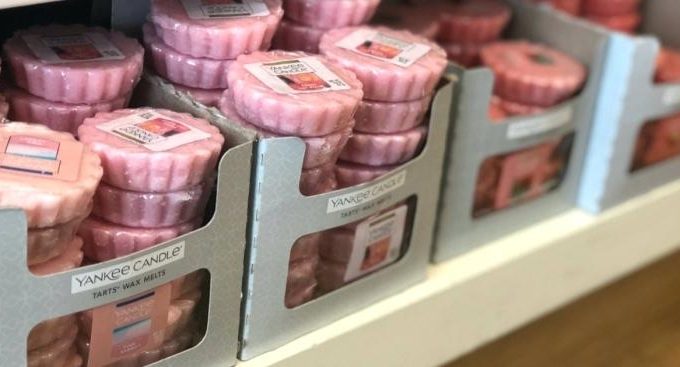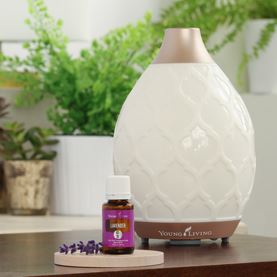
Exposing the truth about Scentsy, Wax Melts and Candles
Do you have:
- congestion
- sniffles
- a runny nose
- headaches
- sinus pressure
- dizziness
- nausea
- fatigue
- irritation of the mouth, throat, eyes, skin, lungs
 Maybe it is something you are bringing into your home and workplace. Candles.
Maybe it is something you are bringing into your home and workplace. Candles.
The money
The candle industry is a multibillion dollar industry.
The problem
Burning or melting paraffin, especially if it contains synthetic fragrance ingredients.
The marketing spin
“We only use high-quality, food-grade paraffin wax, dye, and fragrance.”
“Made in America with premium-grade paraffin.”
 The oxymoron: “food-grade paraffin”
The oxymoron: “food-grade paraffin”
Paraffin comes from PETROLEUM. You can make crayons with it, or candles, or wax paper – but you don’t eat it.
The fumes
Inhaling paraffin candle fumes (burned or melted candles create fumes) can result in headaches, nausea and can lead to lung disease.
Particles released into the air can cause bronchial constriction or asthma attacks.
A study by The American Chemical Association found paraffin increases indoor air pollution,
exposing occupants to acrolein, benzene, ethanol, formaldehyde, dibutyl phthalate, diethyl phthalate, toluene, styrene, ethyl benzene, naphthalene, benzaldehyde, didecyl phthalate, and acetone.
A study by the University of South Florida showed that candles made of paraffin wax emit low levels of benzene even when they are not lit.
- Formaldehyde – irritates eyes, nose, throat, can cause asthma. It is linked to cancer.
- Benzene and toluene – known carcinogens
- Dyes – most are synthetic and can cause irritation
It is really bad for children to be in the same house with burning and melting paraffin
because children’s lungs are not fully developed and they breathe around 3 times more air per kilogram of body weight than adults.
It is really bad for adults to be indoors with paraffin from candles too.
A 66-year-old woman developed interstitial lung disease.
She spent a lot of time in a place of worship, and had always been exposed to vaporized paraffin from burning candles.
Researchers said, “We believe that exposure to vaporized paraffin is closely associated with the pathogenesis of the disease.”
Once the afflicted woman was no longer exposed to the burning paraffin candles, she experienced spontaneous remission.
Wow, throw out the paraffin candles, and your lungs will get busy healing.
Soot
In addition to releasing toxic chemicals, burning paraffin wax produces soot with particles that can remain suspended in the air for hours. Environmental Protection Agency showed that soot emissions from candles containing fragrances are significantly higher than those from non-scented candles.
Fragrance
Several hundred chemicals may be involved in creating a specific scent. Some disrupt hormones, some are potential carcinogens, lung irritants, brain and nervous system toxins, and environmental toxins.
The candle industry does not have to disclose ingredients used to make the scent. They just call it fragrance.
What they mean is, “We just made this toxic soup using 300 chemicals and it smells like Snickerdoodles Dunked in Mocha.”
It only has one ingredient listed, “fragrance” — because who would buy their candle or wax tart if it said, “When you melt/burn this candle, you will spew 300 chemicals into the air for your precious babies to breathe… and we have NO IDEA what it will do to their lungs!
These harmful fragrance chemicals can cause health problems ranging from headaches, dizziness and allergy symptoms to asthma attacks, respiratory tract infections and even cancer.
Burning a candle for an hour is like smoking just one cigarette.
Andrew Sledd, M.D., a Missouri pediatrician specializes in environmental toxicology. He does not think candles are safe at all. “It only takes an hour of burning a candle to produce the same harmful effects as smoking just one cigarette.”
Beeswax
Beeswax candles still release soot when burned. Occasional use in a well-ventilated room would be fine for most people as long as synthetic fragrance is not used.
If beeswax candles are made with pure essential oils, the essential oil molecules will mostly combust as the wick burns.
Dr. Douglas Corrigan stated, “This would not provide therapeutic aromatherapy, just a nice smell.”
Safer alternatives
There are safer ways to scent the air. Here are some suggestions:
Use essential oils. Essential oils can be placed in an ultrasonic diffuser to create a wonderful aroma.
Be careful, many brands showing up in stores today are adulterated with chemicals.
Simmer spices. Place spices such as cinnamon sticks, cloves and nutmeg in a small pot of water on the stove and simmer.
Create potpourri. Use dried flowers, herbs, fruit rinds and spices to make potpourri. There are plenty of DIY recipes – just google!

________________
References
- Fine particles in homes of predominantly low-income families with children and smokers: Key physical and behavioral determinants to inform indoor-air-quality interventions.
https://www.ncbi.nlm.nih.gov/pubmed/28545099 - Lung inflammation and genotoxicity in mice lungs after pulmonary exposure to candle light combustion particles.
https://www.ncbi.nlm.nih.gov/pubmed/28465192 - A case of lipoid pneumonia caused by inhalation of vaporized paraffin from burning candles
https://www.ncbi.nlm.nih.gov/pmc/articles/PMC5065644/ - Romantic, Candle-Lit Dinners: An Unrecognized Source Of Indoor Air Pollution
https://www.pollutiononline.com/doc/romantic-candle-lit-dinners-an-unrecognized-0001
Recommended
-
Dandelion for Liver Support and Health BenefitsJuly 20th, 2024
-
Modified Citrus PectinJuly 11th, 2024
-
Bentonite Clay Mask for Face and ArmpitsJuly 8th, 2024
-
Two Supplements for Erectile DysfunctionJune 30th, 2024












